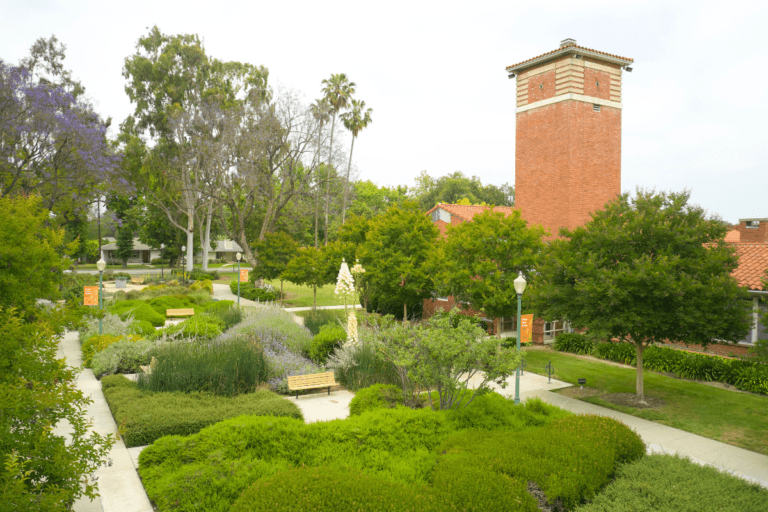La Verne Child Life Specialist Program Changing Healthcare in Japan

Natsumi Sakugawa learned English, moved thousands of miles away from her native Japan and then survived years of college in America.
When she entered an internship program at UCLA Medical Center, she realized that being able to communicate in English was the least of her worries. The University of La Verne alumna, who was enrolled in the Master’s Child Life International Program at the time, encountered patients who only spoke languages such as Spanish and Armenian.
Her teacher, Dr. Leslie Young, says Sakugawa’s story is a familiar one among her international child life students, who encounter many of the same challenges of being in a strange land. Young is a University of La Verne Associate Professor of Education and Program Chair of the Masters Child Life Program, through the Advanced Studies in Education and Human Development in the College of Education and Organizational Leadership.
“I’m just in awe of them,” Young said. “I could never do what they do. Their passion, dedication and determination always shines through. It is an honor to have the students from Japan in my program as well as all international students.”
Sakugawa is one of the more than 30 Japanese students who have come to La Verne to complete the Master’s Child Life International Program. Though Young has taught students from other countries such as Canada, Taiwan, Korea, Mexico and Germany, most of them have been from the Land of the Rising Sun.
“They come over here with the sole purpose of learning child life because they do not have a clinical master’s-level education program in Japan,” Young said.
The wave of students from Japan began 12 years ago when Young came to La Verne full time after working as Director of the Child Life Department at Loma Linda University Children’s Hospital. She connected with a Japanese representative through the Child Life Council, and their friendship turned into an opportunity to serve Japanese students interested in the field.
Young served as keynote speaker in 2007 for the Child Life Annual Conference in Japan, and she toured hospitals where she had the opportunity to talk to doctors and other healthcare workers about the field of child life and the importance of providing not only excellent medical care for children but understanding the importance of caring for the whole child.
Sakugawa became inspired to become a child life specialist during one of Young’s visits to Tokyo.
Child life specialists work with children and their families to help them cope with stressful and traumatic situations, particularly those related to illness, healthcare and hospitalization.
Akane Kurosaki, who is currently enrolled in the program, said she learned about the field while working as a neonatal intensive care unit nurse in Japan.
“I have often seen children who had experienced hospitalization or medical procedures who feared the medical specialists in white uniforms,” Kurosaki said. “Although many medical specialists who are working in a pediatric unit know about this issue, they do not have enough time to address it.”
For international students, becoming a certified child life specialist can be difficult.
Students say some of the biggest hurdles are adapting to American culture and knowing English well enough to use it in an academic setting. Nobumi Yamaguchi, a current child life student from Japan’s Nara prefecture, said the struggle to learn English was beyond what she expected.
“I realized that learning in a master’s program was different than going to language school. At first, I felt too depressed to continue studying. However, the more I use English, the more I feel confident to use it,” Yamaguchi said.
After taking required classes, learning the American healthcare system, completing a Child Life 840-hour internship at an American hospital, and pass the National Child Life Certification Exam, the Japanese students then have the challenge of convincing the hospitals back home that their expertise is needed.
All of Young’s Japanese students so far have obtained jobs in Japan at hospitals where child life specialists previously did not exist. In fact, Sakugawa made headlines when she became the first child life specialist in Okinawa, Japan’s southernmost prefecture.
“I wanted to be the first one and help make the hospital a better place for children in my town,” Sakugawa said.
Young’s students also provide inservices to U.S. students, sharing their experiences as child life specialists in Japan and what the healthcare system is like there.
The world of healthcare in Japan is slowly starting to see the value of the services they provide and the need for families’ involvement in their children’s care.
“Basically, almost every practicing Japanese CLS in Japan is a product of Dr. Leslie Young’s. She is ‘The Miracle Worker’ for the Japanese CLS future,” Kurosaki said.
Being the instrument of change not only in the lives of her students, but also in the Japanese healthcare system, is something that makes Young proud.
“It has absolutely changed my life as well,” she said.


